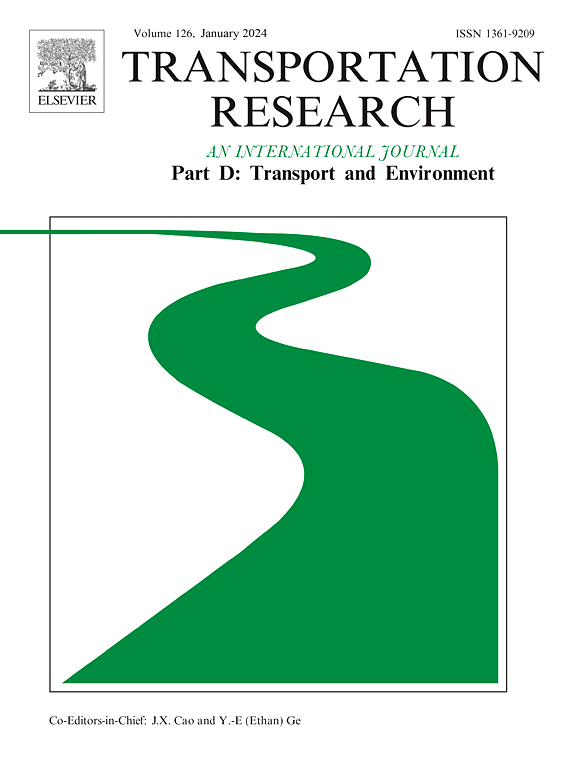利用可解释机器学习探索电动滑板车与骑行服务关系的空间异质性
IF 7.3
1区 工程技术
Q1 ENVIRONMENTAL STUDIES
Transportation Research Part D-transport and Environment
Pub Date : 2024-10-04
DOI:10.1016/j.trd.2024.104452
引用次数: 0
摘要
电动滑板车共享系统的扩展在现有交通系统中引入了几种新的互动方式。然而,很少有研究探讨空间环境如何影响这些互动。为了填补这一空白,本研究利用伊利诺伊州芝加哥市的数据,探讨了电动滑板车与搭乘外包之间的空间异质性关系。我们开发了光梯度提升机(LightGBM),利用搭乘外包车次以及相关的建筑环境和社会人口变量来估算电动滑板车的使用率。该模型使用 SHapley Additive exPlanations(SHAP)进行解释。结果表明,在人口密度较低、就业岗位较少、年轻且受过高等教育的人口较少的地区,门槛效应更为明显,即在超过一定值后,电动摩托车共享与搭乘外包之间的正相关关系明显减弱。这主要是因为共享电动车在这些地区的竞争力有限。这些发现有助于城市协调电动滑板车共享和骑行外包,从而促进可持续交通系统的发展。本文章由计算机程序翻译,如有差异,请以英文原文为准。
Exploring spatial heterogeneity of e-scooter’s relationship with ridesourcing using explainable machine learning
The expansion of e-scooter sharing system has introduced several novel interactions within the existing transportation system. However, few studies have explored how spatial contexts influence these interactions. To fill this gap, this study explored the spatial heterogeneity in e-scooter’s relationship with ridesourcing using data from Chicago, IL. We developed a Light Gradient Boosting Machine (LightGBM) to estimate e-scooter sharing usage using ridesourcing trips along with associated built environment and socio-demographic variables. The model was interpreted using SHapley Additive exPlanations (SHAP). Results indicated that the threshold effects, where the positive relationship between e-scooter sharing and ridesourcing significantly weakened beyond a certain value, were more pronounced in areas with lower population density, fewer jobs, and fewer young, highly educated population. This is primarily attributed to the limited competitiveness of e-scooter sharing in these areas. These findings can assist cities in harmonizing e-scooter sharing and ridesourcing thus promoting sustainable transportation systems.
求助全文
通过发布文献求助,成功后即可免费获取论文全文。
去求助
来源期刊
CiteScore
14.40
自引率
9.20%
发文量
314
审稿时长
39 days
期刊介绍:
Transportation Research Part D: Transport and Environment focuses on original research exploring the environmental impacts of transportation, policy responses to these impacts, and their implications for transportation system design, planning, and management. The journal comprehensively covers the interaction between transportation and the environment, ranging from local effects on specific geographical areas to global implications such as natural resource depletion and atmospheric pollution.
We welcome research papers across all transportation modes, including maritime, air, and land transportation, assessing their environmental impacts broadly. Papers addressing both mobile aspects and transportation infrastructure are considered. The journal prioritizes empirical findings and policy responses of regulatory, planning, technical, or fiscal nature. Articles are policy-driven, accessible, and applicable to readers from diverse disciplines, emphasizing relevance and practicality. We encourage interdisciplinary submissions and welcome contributions from economically developing and advanced countries alike, reflecting our international orientation.

 求助内容:
求助内容: 应助结果提醒方式:
应助结果提醒方式:


